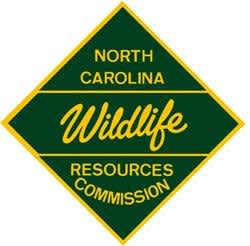North Carolina Birding Checklist Available for Sandy Mush Game Land
OutdoorHub 02.15.13

While many sportsmen know Sandy Mush Game Land as an excellent place to hunt turkeys in the spring or mourning dove in the fall, bird watchers flock to the 2,600-acre game land year-round to observe birds not commonly seen in western North Carolina.
The N.C. Wildlife Resources Commission game land has become such a well-known birding site that Commission biologists developed a birding checklist with help from the Elisha Mitchell Audubon Society (EMAS) to help bird watchers visiting the game land.
The list, which can be downloaded from the Commission’s website and the EMAS website, contains 153 bird species that have been documented by Commission staff, EMAS members, as well as other game land visitors, over the last seven years.
More than 300 bird species are found in western North Carolina, although that number varies depending on the season. Many birds live in the region throughout the year, while others pass through briefly during spring and fall migrations.
Data from the birding checklists should provide biologists with a better understanding of the number of birds, their distribution, and their habitat preferences during the different seasons.
Christine Kelly, a Mountain Region Wildlife Diversity biologist with the Commission, encourages game land visitors to print the online checklist for birding trips.
“We’ve kept the checklist simple so they can be printed at home and easily used in the field,” Kelly said. “We hope that the checklist will encourage more folks to visit Sandy Mush, so eventually, we’ll have a more accurate and complete snapshot of all the birds found on the game land.”
To keep biologists informed, birders can share observations on a central bird observation reporting site such as eBird.
Sandy Mush Game Land Offers Unique Habitat
Located in Buncombe and Madison counties, Sandy Mush Game Land is largely open habitat in an otherwise heavily forested part of the state. The game land was dairy farmland in the past, but today is a mix of native warm-season grass fields, shrub-scrub areas and wildlife food plots. Wildlife Commission staff manages these different habitats to provide cover, nesting and brooding sites, and supplemental food.
This mix of habitats gives birders opportunities to view a diverse bird community that is hard to find elsewhere in the central North Carolina mountains. The game land is one of 105 sites on the N.C. Birding Trail, which is a driving trail that links great birding sites across the state.
“A birder can find orchard orioles, field sparrows and bobwhite quail in the early successional fields, then walk a short distance into the forested habitat and find ovenbird, wood thrush and Acadian flycatchers,” said Joe Tomcho, a conservation technician with the Commission, who worked with Kelly and EMAS member Doug Johnston to develop the birding checklist.
Commission staff manages the game land with prescribed fire to restore native plant communities and provide quality early successional habitat for bobwhite quail, white-eyed vireos, prairie warblers, common yellowthroats and other birds.
They have erected nest boxes for barn owls and American kestrels — two priority species identified in the N.C. Wildlife Action Plan — and girdled trees to create more cavities for cavity-nesting birds, such as woodpeckers, bluebirds and great-crested flycatchers.
“Barn owls and American kestrels readily took to nest boxes that we posted, which made Sandy Mush a popular destination for local birders who needed to check American kestrel off their birding list,” Kelly said. “And Sandy Mush is one of just a few places in the North Carolina mountains where birders can find brown-headed nuthatches.”
Kelly credited the public for turning the birding checklist from a spring nesting season-only checklist to a year-round checklist that could become a useful tool for biologists when planning future bird management activities on the game land.
“It was the local birders who routinely visited Sandy Mush, and then posted their sightings on bird-related websites,” Kelly said. “Their website postings made it easier for biologists to track sightings and evaluate relative seasonal abundance of each species.”
Johnston rallied local birders for a Sandy Mush bird “blitz” in spring 2012 that attracted almost two dozen birders and added several species to the growing checklist. He also introduced the Haywood County-based Carolina Field Birders club to the game land.
“We really couldn’t have developed such a thorough checklist without the help of volunteers in the birding community,” Kelly said.
Working with EMAS members and other volunteers to develop the Sandy Mush Game Land birding checklist was a smooth process that Kelly hopes to emulate for gathering data on other western North Carolina game lands.
“We currently have excellent baseline data on the breeding-season birds at Green River Game Land in Polk County,” Kelly said. “We could conceivably develop a breeding season checklist for Green River as our next project and encourage birders to bird the game land year round so we can eventually develop a four-season checklist for that game land.”
Funding for the Wildlife Resource Commission’s work with songbirds comes from multiple sources including State Wildlife Grants, Pittman-Robertson Federal Aid in Wildlife Restoration, and the Nongame and Endangered Wildlife Fund, which supports wildlife research, conservation and management for animals and the habitats that support them. Donations to the Nongame and Endangered Wildlife Fund provide matching funds to projects benefiting nongame animals and their habitats.
North Carolinians can support this effort, as well as other nongame species research and management projects in North Carolina, by:
- Donating to the Nongame and Endangered Wildlife Fund on line 31 of their state income tax form;
- Registering a vehicle or trailer with a N.C. Wildlife Conservation license plate; and,
- Donating online at www.ncwildlife.org/give.

